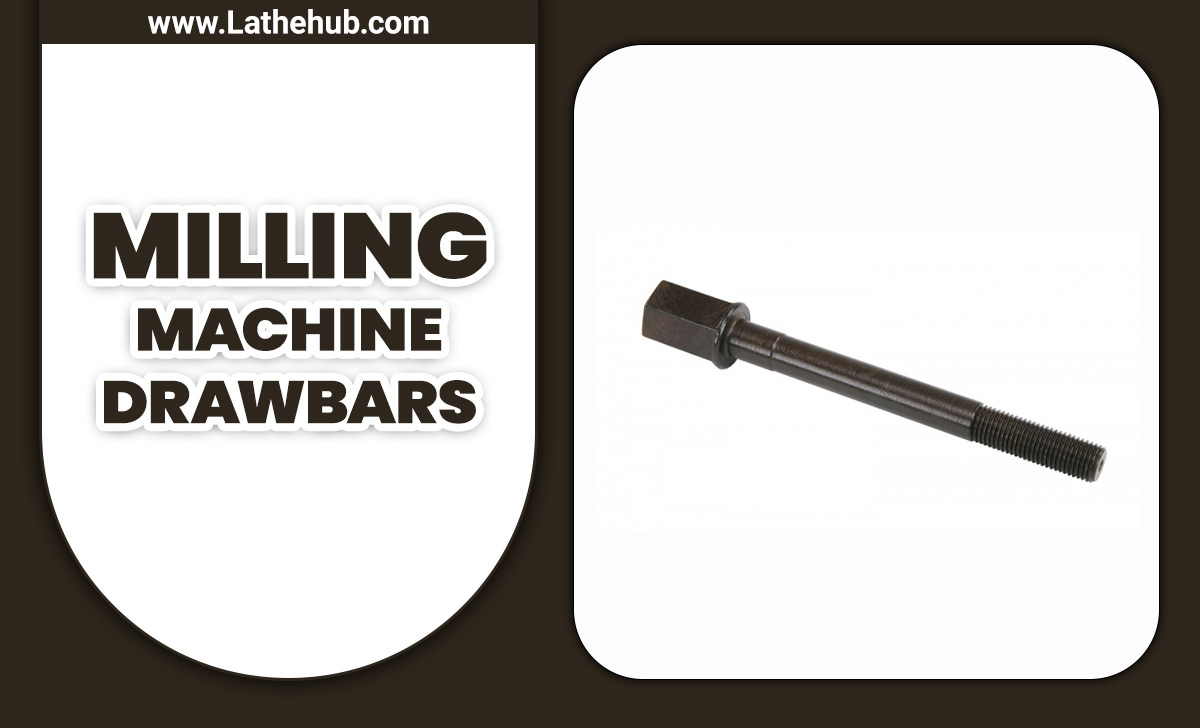Quick Summary
A TiAlN ball nose end mill is your go-to tool for cutting deep slots, especially in tougher materials. Its unique shape and coating allow for precise, clean cuts at greater depths where standard end mills might struggle or break.
Hey everyone, Daniel Bates here from Lathe Hub! Cutting deep slots can be a real head-scratcher when you’re starting out. It’s easy to run into problems like tool breakage, poor surface finish, or just not getting the depth you need. Many beginners find this a frustrating part of milling. But don’t worry, there’s a tool designed specifically for this job, and it makes a world of difference: the TiAlN ball nose end mill. With a little understanding and the right technique, you’ll be carving out those deep slots like a pro. Stick around, and I’ll walk you through exactly why this tool is so effective and how you can use it with confidence.
Why Deep Slots and Standard End Mills Don’t Always Mix
When we talk about milling, we often think about cutting pockets or profiles. But sometimes, you need to create a channel, a groove, or a slot that goes deep into your material. This is where things can get tricky. Standard flat-bottomed end mills are great for many tasks, but when you need to go deep, they face a few challenges:
- Tool Engagement: As a standard end mill cuts deeper, more of its cutting edge engages with the material. This increases the cutting forces and the stress on the tool.
- Chip Evacuation: In deep slots, it becomes harder for the chips (the small pieces of material being cut away) to escape. Packed chips can cause overheating, tool wear, and even tool breakage.
- Tool Length and Rigidity: To reach deep slots, you often need a longer end mill. Longer tools are generally less rigid and more prone to vibration and flexing, which can lead to inaccurate cuts and premature failure.
- Heat Buildup: The combination of increased cutting forces, poor chip evacuation, and longer reach means more heat is generated. This heat can quickly ruin the cutting edge of your tool.
These factors can lead to frustration, wasted materials, and a lot of downtime. It’s like trying to dig a narrow trench with a shovel that’s too wide – it just doesn’t work efficiently. Fortunately, there’s a specialized tool that turns this challenge into a success story: the ball nose end mill.
Introducing the TiAlN Ball Nose End Mill: Your Deep Slotting Hero
So, what exactly is a ball nose end mill, and why does it have a special coating like TiAlN? Let’s break it down.
What is a Ball Nose End Mill?
Unlike a standard end mill that has a flat cutting face, a ball nose end mill has a fully radiused, hemispherical cutting tip. Imagine the tip of a ballpoint pen, but made of super-hard cutting material. This unique shape gives it some amazing properties:
- No Sharp Corner: The rounded tip eliminates the sharp corner found on standard end mills. This means stress is distributed more evenly, reducing the chance of chipping or breaking the cutter.
- Smooth Surface Finish: As it cuts, the ball nose end mill leaves a rounded profile at the bottom of the cut. This is fantastic for creating smooth, contoured surfaces, perfect for mold work or intricate designs.
- Versatile Cutting: While perfect for deep slots, they are also excellent for profiling, 3D contouring, and creating rounded fillets.
What’s the Deal with TiAlN Coating?
The “TiAlN” part refers to a Tinium Aluminum Nitride coating. This is a high-performance coating applied to the surface of the end mill. Think of it as a super-tough, heat-resistant shield for your cutting tool. Here’s why it’s so important, especially for deep slotting:
- High Heat Resistance: TiAlN coatings can withstand extremely high temperatures generated during the cutting process – often significantly higher than uncoated tools. This is crucial when cutting tough materials or cutting at higher speeds.
- Increased Hardness: The coating adds an extra layer of hardness to the tool, allowing it to cut harder materials effectively.
- Reduces Friction: It helps to reduce friction between the cutting tool and the workpiece, leading to cleaner cuts and longer tool life.
- Oxidation Resistance: TiAlN doesn’t easily oxidize (rust or degrade) at high temperatures, which is a common problem with standard coatings.
When you combine the shape of a ball nose end mill with the superior performance of a TiAlN coating, you get a tool that’s uniquely qualified for the challenges of deep slot milling. It’s designed to handle the pressures, heat, and chip management required for precise, deep cuts.
The Magic of the 40 Degree Helix Angle
You’ll often see ball nose end mills described with a “40-degree helix angle.” This might sound a bit technical, but it’s a key feature that enhances their performance for deep slotting, especially in materials like nylon.
What is a Helix Angle?
Imagine the flutes (the spiral grooves) on an end mill. The helix angle is the angle of these flutes relative to the axis of the tool. It’s like the steepness of the spiral thread on a screw.
Why 40 Degrees for Deep Slots?
A 40-degree helix angle strikes a great balance for deep slotting applications:
- Improved Chip Evacuation: A steeper helix angle (like 40 degrees) helps to curl and lift chips away from the cutting zone more effectively than a lower helix angle. This is vital for preventing chip recutting and overheating in deep cuts.
- Reduced Cutting Forces: The helix angle influences how the cutting edge engages the material. A 40-degree angle often results in a smoother shearing action, reducing the overall cutting forces. This means less stress on your machine and your tool.
- Better Surface Finish: The way the flutes interact with the material contributes to the surface finish. A 40-degree helix can often produce a more consistent and smoother finish in deep slots.
- Good for Specific Materials (like Nylon): For softer, gummy materials like nylon, polymers, and some softer plastics and metals, the 40-degree helix provides a good balance of chip control and cutting efficiency without excessive material build-up on the cutter. It helps manage the “stickiness” of such materials.
When you find a “TiAlN ball nose end mill 40 degree for nylon for deep slots,” it indicates a tool specifically optimized for these conditions – the rounded tip for depth, the TiAlN coating for heat and wear resistance, and the 40-degree helix for superior chip management and cutting action in materials like nylon.
Choosing and Using Your TiAlN Ball Nose End Mill: A Practical Guide
Now that you understand why these tools are special, let’s get practical. Choosing the right one and using it correctly is key to success.
Selecting the Right Ball Nose End Mill
Here are a few things to consider when picking your tool:
- Diameter: Match the diameter of the ball nose end mill to the width of the slot you need. Remember, it creates a full radius, so a 1/4-inch ball nose end mill will create a slot that’s effectively 1/4-inch wide at its deepest point (with a 1/8-inch radius at the bottom).
- Flute Count: For deep slotting, especially in general purpose machining, a 2-flute or 3-flute end mill is often preferred.
- 2-flute: Offers more chip clearance and is excellent for slotting and pocketing, especially in softer materials.
- 3-flute: Can handle higher feed rates and is more rigid, also good for slotting and can offer a better surface finish in some applications.
- Coating: As discussed, TiAlN is excellent for high-temperature applications and harder materials. For plastics and softer materials, you might sometimes see uncoated or specialized coatings, but TiAlN is a robust starting point.
- Material Being Cut: Always ensure your end mill is suitable for the material. While TiAlN is versatile, some very specific materials might benefit from different tool geometries or coatings. For common plastics like nylon, a 40-degree helix TiAlN ball nose is often a sweet spot. For aluminum, you might look for tools with fewer flutes and polished flutes.
- Length of Cut (LOC): Make sure the “length of cut” (how far down the flutes extend) is sufficient for your desired slot depth.
How to Machine Deep Slots Safely and Effectively
Here’s a step-by-step approach to using your TiAlN ball nose end mill for deep slots:
Step 1: Secure Your Workpiece
This is non-negotiable. Use clamps, vises, or your machine’s table to firmly hold the material you’re machining. Any movement can lead to inaccurate cuts or accidents.
Step 2: Set Up Your Machine
- Mount the End Mill: Securely install the ball nose end mill into your collet or tool holder. Ensure it’s seated properly and tightened.
- Set Zero Point: Accurately set your X, Y, and Z zero points on the workpiece.
- Program or Jog: Depending on your machine (CNC or manual), program your toolpath or carefully jog the machine to the starting position.
Step 3: Determine Cutting Parameters
This is where experience helps, but for beginners, starting conservatively is best. You’ll need to determine your:
- Spindle Speed (RPM): This is how fast the tool spins. It depends on the end mill diameter, material, and machine capabilities. A good starting point for a 1/4-inch end mill in nylon might be around 10,000-15,000 RPM, but always consult manufacturer recommendations or use online calculators.
- Feed Rate: This is how fast the tool moves through the material. For deep slotting, you want a feed rate that allows the tool to cut effectively without overloading. Start conservatively.
- Depth of Cut (DOC): How much material the tool removes with each pass. For deep slots, you never want to take the full depth in one go. You’ll step down gradually.
- Stepover: If you’re cutting a slot wider than your end mill, this is how much the tool moves sideways for each pass.
Note on Cutting Parameters: Finding exact parameters can be complex. Many tool manufacturers provide charts, and there are online calculators. For example, for a 1/4″ diameter TiAlN ball nose end mill in nylon, a research of typical parameters might suggest a spindle speed of 12,000 RPM and a feed rate of 0.002 inches per revolution (IPR). The depth of cut per pass should be conservative, perhaps 0.050″ to 0.100″ for deep slots.
Always check resources like the Machine Tool Help Speeds and Feeds guide for general starting points, but remember to adapt to your specific situation.
Step 4: Plunge and Roughing Passes
This is the core of deep slotting.
- Plunge Vertically: For a slot, the tool needs to enter the material. If your machine allows, use a controlled “plunge” feed rate straight down into the material. If not, you might need to create a small lead-in ramp.
- Take Shallow Passes: Instead of trying to cut the full depth at once, take multiple shallow passes. For example, if you need a 0.5-inch deep slot, you might take 0.1-inch deep passes, repeating this multiple times. This drastically reduces stress on the tool and improves chip evacuation.
- Chip Evacuation is Key: Allow the machine to cycle out material. For manual machines, you might need to retract the tool partially periodically to clear chips. On CNC, ensure your programmed path allows for this. Compressed air or coolant can also help blast chips away.
Step 5: Finishing Passes
Once you’ve reached your target depth, a final shallow “clean-up” pass can improve surface finish. This is often a radial pass (moving sideways) or a shallow axial pass (moving deeper very slightly with light engagement). Keep these shallow to achieve a good finish.
Step 6: Inspect and Deburr
After the cut is complete, carefully inspect your slot. Remove any burrs (sharp, unwanted edges) from the slot edges using a deburring tool or file. This is especially important if the slot is for a specific part that needs to fit precisely.
Material Specifics: Nylon and Deep Slots
Nylon is a popular material for DIY projects and prototypes due to its toughness, light weight, and ease of machining. However, it can also be a bit “gummy” or “stringy,” which makes chip evacuation and a clean cut challenging. This is where the TiAlN ball nose end mill with a 40-degree helix really shines.
Why the TiAlN Ball Nose is Great for Nylon
- Heat Management: Nylon can melt or deform if too much heat builds up. The TiAlN coating’s heat resistance helps keep the tool cool, preventing material from welding onto the cutter.
- Chip Formation: The 40-degree helix angle helps to efficiently curl and break the chips of nylon, preventing long, stringy chips that can tangle around the tool.
- Smoothness: The ball nose shape helps create a smoother profile in nylon, reducing the risk of tearing or shredding the material, especially at the bottom of slots.
- Lubrication (Considerations): While TiAlN is good, some machinists find a small amount of cutting fluid or even a spray of water can further improve chip flow and cooling when machining nylon. Be cautious with coolants and plastics, as some can react.
When machining nylon, always start with conservative speeds and feeds and gradually increase them as you gain confidence and observe the chip formation. The goal is to get a nice, small chip that curls away cleanly.
Comparing Ball Nose End Mills to Other Slotting Tools
It’s helpful to see how the TiAlN ball nose end mill stacks up against other options for creating slots.
| Tool Type | Pros | Cons | Best For |
|---|---|---|---|
| TiAlN Ball Nose End Mill | Excellent for deep slots, smooth internal radii, good chip control with higher helix, TiAlN coating for heat/wear. | Can leave a radiused bottom (sometimes not desired), tool length can be a factor for rigidity. | Deep slots, rounded fillets, 3D contouring, tough materials, hobbyist plastics. |
| Standard Flat-Bottom End Mill | Can create sharp corners at slot bottom, good for general milling. | Challenging for very deep slots due to chip evacuation and tool load, risk of breakage. | Shallow slots, pockets, profiling, general machining. |
| Keyway Cutter / Slotting Cutter | Designed specifically for creating narrow parallel slots (keyways), can be very rigid. | Limited to specific slot widths, often generates a lot of heat and chips, not for deep contoured slots. | Machining precise narrow slots or keyways where a specific width is required. |
| Drill Mill (or combination drill/end mill) | Can plunge directly like a drill, then mill to the side. | Not ideal for smooth deep slots, often leaves a conical bottom, limited depth. | Creating a starting hole and then milling into it, roughing out material. |
| Solid Carbide End Mill (Uncoated) | Very hard, good for many materials. | Can overheat quickly in deep cuts without a good coating; poor chip evacuation in deep slots without specific geometry. | General purpose milling with good cooling and moderate depths. |
As you can see, while other tools have their place, the TiAlN ball nose end mill is specifically engineered for situations where depth and a clean, rounded profile are key. The added benefit of the TiAlN coating makes it robust for demanding tasks.
Frequently Asked Questions (FAQs)
What is the primary advantage of a ball nose end mill for deep slots?
Its rounded tip distributes stress evenly, reducing the risk of breakage, and its shape is ideal for milling to greater depths where standard end mills would struggle with chip evacuation and deflection.







